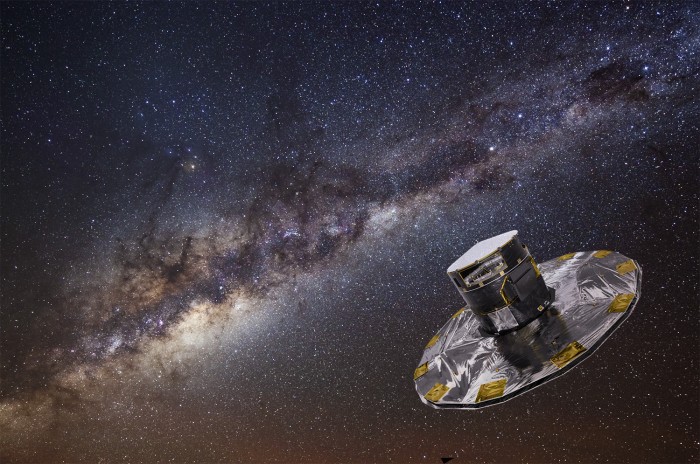
Gaia is the European Space Agency’s latest surveillance mission, launched in late 2013. Since then, the satellite has assumed its station and remains suspended 1.5 million kilometers away from Earth, slowly mapping out surrounding stars and galaxies. The astronomers working on Gaia’s mission to catalogue our cosmic neighbourhood have just released the first batch of data collected and it completely dwarfs the celestial map that preceded it.
Gaia was designed to build on the work of a previous satellite Hipparcos, which operated from 1989 to 1993 and gave the world its first expansive look at the Universe. Hipparcos charted some 100 000 stars in the Milky Way and could discern distance, brightness and motion of different objects in space.
Gaia, with only its first return, has enlarged that amount of data about 20-fold. The data batch consists of approximately 1.1 billion sources of light – about 400 million of which had never been recorded before. It is Gaia’s ultra-high resolution that allows it to perceive infinitesimal and faint light sources (which would be blurred together by lesser optic technology).
As a testament to recent leaps in technology, the Gaia satellite has inundated scientists with extraordinarily detailed images of distant stars and galaxies. Its optical scope is capable of distinguishing billions of tiny dots and its targeting precision is comparable to zooming in on a single coin across the breadth of the Atlantic Ocean.
The data volume is so vast that the astronomers have appealed to the public to help scrutinise Gaia’s findings. An open web portal has been established on which anyone can navigate through Gaia’s visual data and hunt for interesting phenomena. During a recent BBC report, a group of young schoolchildren discovered an uncharted supernova (exploded star).
The satellite consists of two telescopes whose mirrors reflect their captured light onto a one-billion-pixel camera, which then assimilates the data through other super-sensitive instruments. Gaia’s camera can pinpoint light sources with phenomenal accuracy, but its sensors are capable of measuring much more.
In addition to proximity, Gaia can analyse the physical characteristics of stars. Its instruments can discern temperature and density which help scientists to determine the age of celestial bodies. They can estimate how close a star is to death (or how recently it happened, if it already did). Gaia scans certain far-flung objects repeatedly, measuring the movement that stars and galaxies make towards or away from it. If this measurement is correlated with the proper motion of stars, it may reveal more on the dynamics of the Universe in its entirety.
It is projected that Gaia will add 3 billion more stars to the European Space Agency’s catalogue before the end of its course, which is slated for late 2017.






